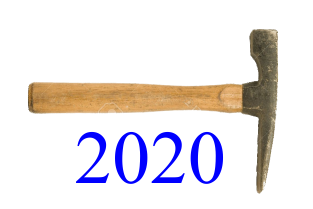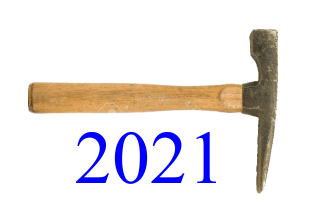Michael Kishchuk

B. Sc. Honours Thesis
(PDF - 12.5 Mb)
Indoor concentrations of radon gas in excess of HealthCanada guidelines have been reported throughout the Whitehorse area, yet only cursory measurements have been made to determine the concentration of radon in undisturbed near-surface settings. Radon-222 is a carcinogenic gas produced by the decay of 226Raas part of the 238Udecay series. Exposure to radon and its radioactive daughters is the second-leading cause of lung cancer in Canada. Information about its occurrence is therefore important for public healthand for policies such as building codes. Low concentrations of uranium in bedrock underlying the Whitehorse region suggest that surficial sediment may be a primary local source of 222Rn.To evaluate radon sources and activity, 30 sites representing a range of bedrock and surficial sediment types were evaluated in the summer of 2020. The underlying bedrock lithologies are granodiorite, limestone, clastic sediments, and basalt. The surficial sediment types include lodgement till, glaciofluvial sand and gravel, glaciolacustrine fine sand and silt, fluvialsand and gravel, and eolian sand. To determine controlling factors, mean radon concentration at each site was compared to bedrock lithology, surficial sediment composition, type, and thickness, grain size distribution, sediment maturity, soil moisture, matrix geochemistry, and clast geochemistry.A positive correlation was observed between grain size distribution and radon concentration, with sediments containing more silt and clay in their matrix displaying higher radon concentration, and this may be due to the decreased permeability of clay-rich sediments. Radon concentration is generally higher in less mature sediments (e.g. till) compared to more mature sediments (e.g. fluvial and eolian sand), suggesting that less weathered sediment types may produce more radon. No significant correlationwas observedbetween radon concentration and bedrock lithology nor depth to bedrock, possibly because sediment thickness in the Whitehorse region exceeds the distance radon can travel before it decays. Pronouncedinterseasonal variation was observed at three long-term monitoring sites, with little intraseasonal variation over the summer. This variation may be caused by seasonal freezing and thawing of the ground, an important consideration in northern landscapes. Geochemical analysis suggests that while some radon may be produced in near-surface settings, the controls examined in this study are primarily controls on transport.Sediment maturity and grain size are first order controlling factors of radon concentration insurficial sediment and bedrock is neither the only nor the most important source of radon in the study area.
Key words: radon, glaciated landscapes, grain size distribution, sediment maturity, seasonal variation
Pages: 77
Supervisor: John Gosse



